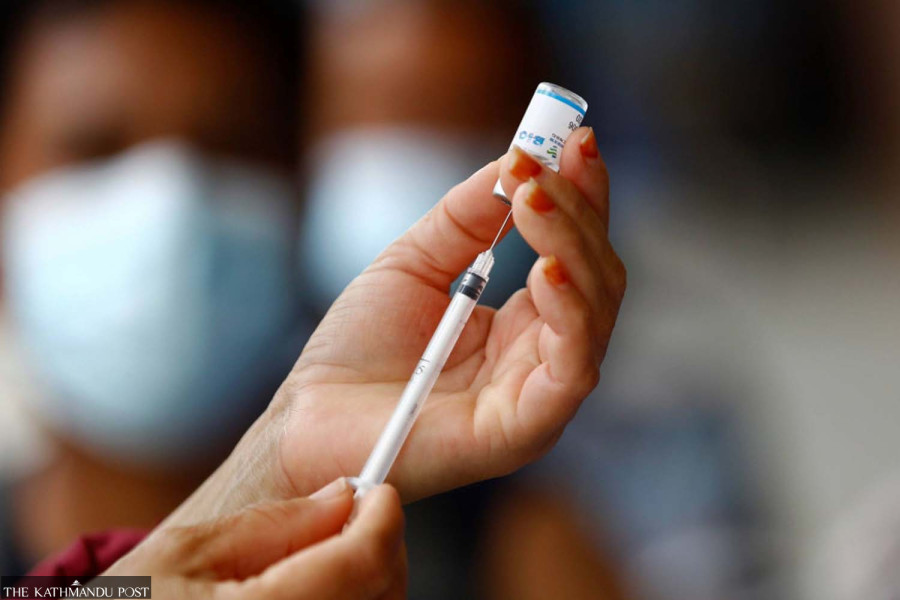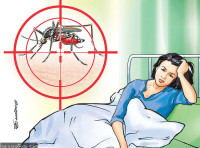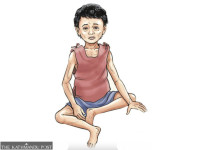Health
Month-long campaign targets unvaccinated children
At least four percent children under two years of age have received no vaccines. Experts stress targeted plans to close the gap and avert new outbreaks.
Post Report
Parents of children under five who have not completed the routine immunisation list have been urged to inoculate their children in the ongoing nationwide campaign that began on April 14.
The month-long campaign aims to increase the coverage of routine immunisation, which has slumped in recent years compared to the past.
“Like last year, a nationwide immunisation campaign has been launched this year also,” said Dr Ramesh Kanta Adhikari, senior immunisation expert and a member of the National Immunisation Advisory Committee. “Children under five can receive the vaccines they missed during the routine schedule.”
Childhood immunisation is the number one priority of the government, under which 13 types of vaccines are given against a range of diseases, including measles-rubella, pneumonia, tuberculosis, diphtheria, pertussis, tetanus, hepatitis B, rotavirus, Japanese encephalitis and typhoid under the regular immunisation programme, free of cost. The Ministry of Health and Population has planned to include the human papillomavirus vaccine in the regular immunisation list from next year.
Regular immunisation is one of the most successful programmes in Nepal, with a high coverage rate. The country has demonstrated remarkable progress in reducing the under-five mortality rate and the regular immunisation programme is credited with that.
However, the Nepal Demographic and Health Survey-2022 carried out by the Ministry of Health and Population showed that at least four percent of the children aged between 12 and 23 months have received no vaccine at all. This figure was one percent in 2016.
Multiple factors, including floating populations, scattered slums, lack of awareness and poor access to health workers for the low vaccine coverage rate, experts say.
“We know the high-risk areas and high-risk groups and some factors for not seeking the vaccine of the routine immunisation list,” said Adhikari. “Health authorities must take initiatives to boost vaccine coverage.”
Doctors say immunisation is the most cost-effective, most powerful and efficient way to control and eliminate vaccine-preventable diseases that contribute to childhood illnesses and deaths.
Studies show that vaccination is the most successful public health programme worldwide, after safe drinking water, in reducing morbidity and mortality rates. Nepal itself has seen a marked decline in child deaths through this programme.
Immunisation experts stress the need for micro-planning to boost the coverage rate of childhood vaccination. They say that health agencies must identify risk groups, including children who are not seeking vaccination, and take measures accordingly.
“Multiple factors, including education level, social structure, effectiveness of public health programmes and others, are responsible for zero-dose cases in routine immunisation,” said Dr Shyam Raj Upreti, an immunisation expert. “These issues must be addressed, and planning should be done at the micro level.”
Health ministry officials said that they have asked the agencies concerned to update their micro-plans to boost vaccine coverage. They have also requested school administrations to make sure that children seeking new admission have received all routine vaccines and have initiated an awareness drive on the importance of vaccination.
Several districts have witnessed massive measles outbreaks in the past years. A low vaccine coverage rate was blamed for the outbreaks. Officials say most measles outbreaks have been reported among marginalised communities and religious minorities—Muslims, Catholics, and other backward groups—where the level of awareness for regular immunisation is low.




 6.12°C Kathmandu
6.12°C Kathmandu













